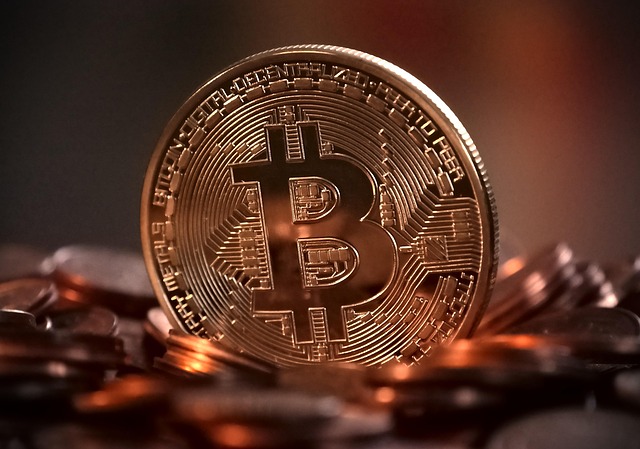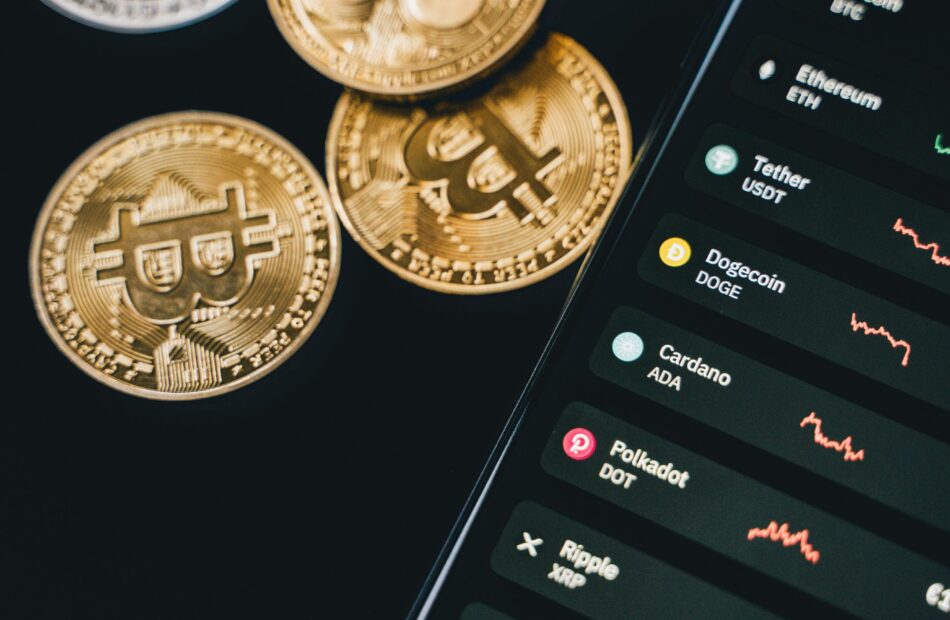South Korea blocks 14 crypto exchanges on Apple Store — Report
South Korea is expanding a ban on digital asset firms’ applications servicing its citizens. On April 11, the country’s Financial Services Commission (FSC) announced that 14 crypto exchanges were blocked on the Apple store. Among the affected exchanges are KuCoin and MEXC.The report, which was made public on April 14, says the banned exchanges were allegedly operating as unregistered overseas virtual asset operators. The report also states that the Financial Information Analysis Institution (FIU) will continue to promote the blocking of the apps and internet sites of such operators to prevent money laundering and user damage.The request to block applications on the Apple Store comes after Google Play blocked access to several unregistered exchanges on March 26. KuCoin and MEXC were also targeted during the blocking of the Google Play apps. The FSC published a list of 22 unregistered platforms operating in the country, with 17 of them already blocked on Google’s marketplace. The 17 crypto exchanges blocked on Google Play. Source: FSCAccording to the FSC report, users will not be able to download the apps on the Apple Store, while existing users will not be able to update the apps. The FSC notes that “unreported business activities are criminal punishment matters” with penalties of up to five years in prison and a fine of up to 50 million won ($35,200).FIU considers sanctions against unregistered VASPsOn March 21, South Korean publication Hankyung reported that the FIU and the FSC were considering sanctions against crypto exchanges operating in the country without registration with local regulators. The sanctions included blocking access to the companies’ apps.In South Korea, operators of crypto sales, brokerage, management, and storage must report to the FIU. Failure to comply with registration and reports is subject to penalties and sanctions.Related: South Korea reports first crypto ‘pump and dump’ case under new lawThe latest sanctions come as crypto is reaching a “saturation point” in South Korea. As of March 31, crypto exchange users in the country passed 16 million — equivalent to over 30% of the population. Industry officials predict that the number could surpass 20 million by the end of 2025.Over 20% of South Korean public officials hold cryptocurrencies, with the total amount reaching $9.8 million on March 27. The assets varied and included Bitcoin (BTC), Ether (ETH), XRP (XRP), and Dogecoin (DOGE).Magazine: Asia Express: Low users, sex predators kill Korean metaverses, 3AC sues Terra
Solana rallies 20% against Ethereum, but is $300 SOL price within reach?
Solana’s SOL has rallied more than 20% against Ether (ETH) over the last seven days, and a trader is eyeing a potential breakout to $300, which would mark new all-time highs.SOL/ETH ratio hits highest weekly closeThe SOL/ETH ratio, which reflects the value of Solana in Ether, rose to 0.080 on April 13, marking the highest weekly close ever, according to data from Cointelegraph Markets Pro and Binance.The SOL/ETH trading pair has been forming higher highs on the daily chart since April 4, suggesting an uptrend is underway.SOL/ETH daily chart. Source: Cointelegraph/TradingViewThe SOL/ETH pair gains follow a bullish week for Solana, which has increased by 35% over the last seven days, against a 13% increase in ETH price over the same timeframe. “The SOL/ETH chart has just flashed a sign of strength,” said pseudonymous trader Bitcoinsensus in an April 14 post on X, adding:“Solana has closed its highest weekly close against Ethereum in history, reflecting that we could see continued outperformance of the Solana Ecosystem.”Previously, the SOL/ETH ratio reached as high as 0.093 in January during a rally in crypto prices fueled by US President Donald Trump’s inauguration, which saw the price briefly notch a new all-time high of $295.Can Solana price reach $300 in April?Popular crypto trader BitBull shared a CME futures chart on X that suggests SOL price could break out toward the $300 mark next.The trader cited Ether’s price consolidation around $2,000 on the CME chart before breaking out to all-time highs in 2021. “SOL is now showing a similar structure on the CME futures chart” as it trades with the $120 and $130 range, BitBull pointed out, adding that SOL could follow a similar breakout to all-time highs above $300.“Just like Ethereum’s run in 2021, Solana is setting up for a massive move in 2025.”SOL CME Futures chart vs. ETH CME futures chart. Source: BitBullRelated: Fartcoin rallies 104% in a week — Will Solana (SOL) price catch up?Chart technicals aside, several onchain metrics suggest that SOL’s path to new all-time highs faces significant hurdles.For example, Solana’s network fees dropped more than 97% to $898,235 million on April 14, compared to $35.5 million on Jan. 20.Solana network daily transaction fees, USD. Source: DefiLlamaThe decline in Solana fees aligns with reduced trading activity on Raydium, Pump.fun, and Orca. At the same time, fees have stayed unchanged since mid-February on other decentralized applications, such as Jito, Moonshot.money, Meteora and Photon. Similarly, the daily DEX volumes on Solana plummeted to $2.17 billion on April 14, 93% below its Jan. 20 peak of $35.9 billion. Solana weekly DEX volumes, USD. Source: DefiLlamaTherefore, SOL’s journey toward new all-time highs will be a tough challenge unless there is a notable rise in network activity. SOL’s price is up 3% during the past 24 hours to $133 and 54.5% below its Jan. 19 all-time record. This article does not contain investment advice or recommendations. Every investment and trading move involves risk, and readers should conduct their own research when making a decision.
Bots are killing social media, but decentralization can save it
Opinion by: Leroy Hofer, co-founder and CEO at Teneo ProtocolAs the old wisdom goes, nobody knows you’re a dog on the internet. Often enough, nobody knows if you’re a bot either, to the point where the dead internet theory sometimes feels disturbingly tangible. Bot traffic share hit its highest level in 2024, up 2% on the year before, according to the 2024 Imperva Bad Bot Report. The bot pandemic is ravaging the Web. People are taking notice — people like Chanpeng Zhao, for example, who recently urged Elon Musk to ban bots on X. He’s not the only one in the Web3 community to call for such measures, and rightly so. From artificially inflating engagement metrics to orchestrating scams, bots are quickly drowning out real human interactions — and it’s at a time when our lives drift more and more into the online world. While platform owners continue to roll out AI-driven moderation and paywalls to curb bot activity, these solutions fail to address the root problem. Moderation tools also regularly operate with minimal transparency — incorrectly flagging legitimate content without users knowing why.Users also often have to surrender personal data to prove they are not bots, raising privacy concerns and creating barriers to participation. More problems are being made, and a decentralized approach is the only viable path forward.If left to fester, the rise of bots will create repercussions that go way beyond social media. Companies pouring money into digital marketing will see their budgets wasted on fake engagement. It’s even possible to imagine a dirty trick where a rival would use bots to waste the competitor’s money by feeding them fake impressions — this already happens in the digital ad space.People are — and will continue to become — more suspicious of online interactions, making it harder for authentic creators and businesses to earn trust. The user experience also suffers. As automated noise drowns out meaningful discussions, users may eventually abandon social media for good. We need to deal with the bot problem for all these and other reasons — once and for good.The limits of centralized solutionsSocial media giants have been using centralized moderation strategies to tackle the bots issue for quite some time. AI-driven detection systems serve as the first line of defense. They’re far from perfect. Bots are getting smarter, often slipping through the cracks by mimicking human behavior and bypassing safeguards. On top of that, false positives can lead to unfair restrictions on genuine users. Oh, the mighty banhammer, a weapon from a more civilized age. Recent: CZ urges Elon Musk to ban bots on the X social media platformAnother common tactic is the implementation of paywalls, like X’s verification fees, which require users to pay for authentication. This method raises the financial hurdle for bot operators but also creates a two-tiered system that disadvantages users who can’t — or won’t — pay. Paywalls do little to deter well-funded bot farms that can easily overlook these costs. While these measures are well-meaning, they often miss the mark when balancing security with user accessibility.A decentralized solutionA decentralized model hands the reins back to the users and offers an alternative to having centralized entities decide what’s real and what’s not. Using blockchain-based decentralized identity (DID) and reputation systems, platforms can verify real users without compromising their privacy. Decentralized solutions reduce the need for unclear moderation policies and empower people to control their own digital reputations across different platforms.DID solutions enable users to verify their authenticity through cryptographic attestations, so intrusive Know Your Customer processes are unnecessary. Reputation-based systems can help to strengthen bot resistance by rewarding verified users with more social credibility while shrinking the impact of suspicious accounts. The real advantage here is that these systems operate transparently, preventing centralized authorities from imposing rules that may prioritize corporate interests over user rights.Fixing social media’s bot problem without breaking itThe bot problem isn’t just a hassle — it’s a fundamental threat to the integrity of social media. The challenge is finding a solution that gets rid of bots without getting rid of free speech and user control. Centralized solutions are failing. Even worse, centralized systems also introduce new problems under the guise of security. A decentralized, data-driven approach enables people to authenticate themselves on their own terms, making bot-driven manipulation much harder.We urgently need to move beyond the current system and push for decentralized solutions that protect users and bring authenticity back to social media. If social media is to be a space for genuine human interaction, it has to go decentralized before the bots make it useless.Opinion by: Leroy Hofer, co-founder and CEO at Teneo Protocol. This article is for general information purposes and is not intended to be and should not be taken as legal or investment advice. The views, thoughts, and opinions expressed here are the author’s alone and do not necessarily reflect or represent the views and opinions of Cointelegraph.
Crypto investment products nearly wipe 2025 gains as outflows hit $7.2B
Digital asset exchange-traded products (ETPs) saw almost $800 million in outflows last week, marking their third consecutive week, according to a report from crypto asset manager CoinShares. On April 14, CoinShares reported that crypto ETPs saw $795 million in outflows last week, with Bitcoin (BTC)-based products accounting for $751 million, while Ether (ETH) products followed with $37.6 million. While the major tokens saw increased outflows, some altcoins went against the flow, seeing small gains. These included XRP, Ondo Finance, Algorand and Avalanche. According to CoinShares, the total outflows of crypto ETPs since February have reached $7.2 billion, nearly wiping out the year-to-date (YTD) inflows from the investment products. Tariff activity weighs in on crypto ETPsCoinShares head of research James Butterfill attributed the outflows to the recent tariff-related activities initiated by United States President Donald Trump. On April 2, Trump signed an executive order imposing a 10% baseline tariff on all imports from all countries. The president also set reciprocal tariffs for countries that charge tariffs on US imports. The Trump administration then continued flip-flopping over tariff policy, bringing market uncertainty. Butterfill wrote that the “wave of negative sentiment” that started in February has resulted in record outflows of $7.2 billion. The outflows have nearly wiped out all the YTD inflows, now amounting to $165 million.In addition to Bitcoin and Ether-based products, altcoins like Solana, Aave and Sui also collectively saw outflows of over $6 million last week. While Bitcoin-related products have also seen huge outflows, its YTD gains still stand at $545 million. Furthermore, short-Bitcoin products also saw outflows totaling $4.6 million. Related: This year’s top ETF strategy? Shorting Ether — Bloomberg IntelligenceBlackRock’s iShares lead crypto ETP outflows BlackRock’s iShares exchange-traded funds (ETFs) had the most outflows among ETP providers. CoinShares data shows that BlackRock’s ETFs saw $342 million in outflows last week, putting its total month-to-date outflows at $412 million. Crypto ETP flows chart by asset provider. Source: CoinSharesEven though BlackRock had massive outflows this month, the ETF issuer still has about $2.8 billion in YTD inflows. The asset manager also holds over $49.6 billion in assets under management (AUM).Magazine: Memecoin degeneracy is funding groundbreaking anti-aging research
Trump’s World Liberty Financial buys $775K in SEI in altcoin buying spree
The Trump family-backed crypto project World Liberty Financial (WLFI) has added 4.89 million SEI tokens valued at $775,000 to its portfolio, according to onchain data. Data from blockchain analytics firm Arkham Intelligence shows the purchase was made on April 12 by one of WLFI’s trading wallets using USDC transferred from the project’s main wallet. It’s the same trading wallet previously used by WLFI to accumulate other altcoins.WLFI holds a diversified portfolio, including Bitcoin (BTC), Ether (ETH), and a larger number of altcoins, such as Tron (TRX), Ondo Finance (ONDO), Avalanche (AVAX) and now Sei (SEI).According to blockchain researcher Lookonchain, WLFI has spent a total of $346.8 million accumulating 11 different tokens, but as of April 12, it has yet to see a profit on any of them. The project’s Ethereum investments alone are currently down over $114 million. Overall, Lookonchain says WLFI’s portfolio is down $145.8 million.World Liberty Financial’s current on-paper profit/loss on its altcoins. Source: Lookonchain Only two months ago, in a Feb. 3 X post, Donald Trump’s son, Eric Trump, urged his followers to buy Ether, writing: “In my opinion, it’s a great time to add $ETH.” Originally, the tweet also included “you can thank me later,” but it was edited to remove those five words.At the time of writing, data from CoinGecko showed ETH’s price had fallen 55% since Eric Trump’s tweet, currently trading at $1,611, down from the Feb. 3 close of $2,879.Related: Democrats slam DOJ’s ‘grave mistake’ in disbanding crypto crime unitWLFI’s USD1 logo appears on major exchangesMeanwhile, an icon for WLFI’s stablecoin, USD1, has appeared on Coinbase, Binance and the crypto aggregator website CoinMarketCap in what appears to be the coin’s unofficial logo unveiling. WLFI has made no official announcement about USD1’s logo.Observers speculate this is USD1’s new logo. Source: Binance Trump’s involvement with USD1 has attracted criticism from lawmakers on both sides of US politics. At an April 2 US House Financial Services Committee hearing on stablecoin legislation, Democratic Representative Maxine Waters suggested President Trump may be ultimately planning to use USD1 to replace the US dollar.“Trump likely wants the entire government to use stablecoins, from payments made by the Department of Housing and Urban Development to Social Security payments to paying taxes. And which coin do you think Trump would replace the dollar with? His own, of course.”The committee’s Republican chair, French Hill, aired similar concerns.“If there is no effort to block the president of the United States of America from owning his stablecoin business […] I will never be able to agree on supporting this bill, and I would ask other members not to be enablers.”Magazines: 3 reasons Ethereum could turn a corner: Kain Warwick, X Hall of Flame
Bitcoin rallies amid macroeconomic concerns — Are HYPE, ONDO, RNDR and KAS next?
Bitcoin (BTC) made a brilliant comeback this week, rising more than 7%, indicating solid buying at lower levels. BitMEX co-founder Arthur Hayes said in a post on X that the US bond market crisis could be setting the stage for more policy response, and that could result in an “up only mode” for Bitcoin.Blockchain and intelligence platform Glassnode said in a post on X that Bitcoin had built solid support at $79,000, with roughly 40,000 Bitcoin accumulated there. Bollinger Bands creator John Bollinger also echoed similar views. In a post on X, Bollinger said that Bitcoin was forming a “classic Bollinger Band W bottom,” but it needed confirmation.Crypto market data daily view. Source: Coin360Market participants will be closely watching the performance of the US dollar index (DXY), which is trading below the 100 level. Any further weakness in the US dollar could be bullish for Bitcoin. If Bitcoin manages to hold on to the higher levels, it is likely to boost the sentiment in the cryptocurrency sector. That could trigger a recovery in select altcoins. What are the cryptocurrencies that may benefit from Bitcoin’s strength? Bitcoin price analysisBitcoin broke and closed above the resistance line on April 12, which is the first indication that the corrective phase may be ending.BTC/USDT daily chart. Source: Cointelegraph/TradingViewThe bears are unlikely to give up easily and will try to pull the price back below the 20-day exponential moving average ($82,885). If they manage to do that, it suggests that the bears remain active at higher levels. The BTC/USDT pair could then drop to $78,500.Buyers are likely to have other plans. They will try to defend the 20-day EMA on the way down. If the price rebounds off the 20-day EMA, it will signal a change in sentiment from selling on rallies to buying on dips. That enhances the prospects of a rally to $89,000 and, after that, to $95,000.BTC/USDT 4-hour chart. Source: Cointelegraph/TradingViewThe 20-EMA is sloping up, and the relative strength index (RSI) is in the positive territory, indicating an advantage to the bulls. A rebound off the 20-EMA suggests that the bulls are trying to flip the resistance line into support. The pair may face selling at $89,000, but it is likely to be crossed. That could propel the pair to the $92,000 to $95,000 zone.On the downside, the moving averages are the crucial support for the bulls to defend. If they fail in their endeavor, the pair could plummet to $78,500.Hyperliquid price analysisHyperliquid (HYPE) closed above the 50-day SMA ($15.14) on April 11 and reached the overhead resistance of $17.35 on April 12.HYPE/USDT daily chart. Source: Cointelegraph/TradingViewThe 20-day EMA ($13.84) has started to turn up, and the RSI has risen near 56, suggesting buyers have the edge. Sellers are trying to defend the $17.35 resistance, but if the bulls prevail, the HYPE/USDT pair could start a rally to $21 and subsequently to $25.This optimistic view will be negated in the near term if the price turns down from $17.35 and breaks below the 20-day EMA. The pair could then fall to $12, which is expected to attract buyers.HYPE/USDT 4-hour chart. Source: Cointelegraph/TradingViewThe pair has pulled back to the 20-EMA, which is a critical near-term support to watch out for. If the price bounces off the 20-EMA with strength, it signals buying on dips. The bulls will then make one more attempt to overcome the barrier at $17.35. If they succeed, the pair may rise to $21. There is minor resistance at $18, but it is likely to be crossed. Sellers will have to pull and sustain the price back below the 20-EMA to weaken the bullish momentum. The pair could then descend to the 50-SMA.Ondo price analysisOndo (ONDO) has broken out of the downtrend line, suggesting that the bears may be losing their grip.ONDO/USDT daily chart. Source: Cointelegraph/TradingViewThe recovery is facing selling near $0.96 but may find support at the 20-day EMA ($0.83) on the way down. If the price rebounds off the 20-day EMA, the bulls will again try to drive the ONDO/USDT pair above $0.96. If they manage to do that, the pair could pick up momentum and rally toward $1.20.Sellers are likely to have other plans. They will try to pull the price back below the 20-day EMA. If they can pull it off, the pair could drop to $0.79 and later to $0.68.ONDO/USDT 4-hour chart. Source: Cointelegraph/TradingViewThe 4-hour chart shows that the pair is facing selling in the $0.93 to $0.96 resistance zone. Buyers will have to keep the price above the 20-EMA to maintain the upper hand. If the price rebounds off the 20-EMA with strength, the possibility of a break above $0.96 increases. The pair may then climb to $1.05 and later to $1.20.Instead, if the price skids below the 20-EMA, it suggests that demand dries up at higher levels. The pair may then descend to the 50-SMA.Related: Bitcoin price tags $86K as Trump tariff relief boosts breakout oddsRender price analysisRender (RNDR) has reached the overhead resistance of $4.22, where the bears are expected to mount a strong defense.RNDR/USDT daily chart. Source: Cointelegraph/TradingViewThe moving averages are on the verge of a bullish crossover, and the RSI has risen into the positive zone, signaling an advantage to buyers. If the price rises above $4.22, the RNDR/USDT pair will complete a double-bottom pattern. There is minor resistance at $5, but it is likely to be crossed. The pair could then climb to the pattern target of $5.94.Contrary to this assumption, if the price turns down sharply from $4.22 and breaks below the moving averages, it signals a range-bound action in the short term.RNDR/USDT 4-hour chart. Source: Cointelegraph/TradingViewThe pair is facing selling at $4.06, but the pullback is likely to find support at the 20-EMA. If the price rebounds off the 20-EMA with strength, it will suggest that the sentiment remains positive. That improves the prospects of a break above $4.22. The pair may face resistance between $4.60 and $5, but if the price does not dip back below $4.22, it signals the start of a new up move.Alternatively, a break and close below the 20-EMA suggests the bulls are losing their grip. The pair may then slump to the 50-SMA, signaling a consolidation in the near term.Kaspa price analysisKaspa (KAS) rose and closed above the 50-day SMA ($0.07) on April 12, indicating that the selling pressure is reducing.KAS/USDT daily chart. Source: Cointelegraph/TradingViewThe 20-day EMA ($0.07) has started to turn up, and the RSI has risen into the positive territory, suggesting that the path of least resistance is to the upside. If buyers drive the price above $0.08, the KAS/USDT pair will complete a double-bottom pattern. This bullish setup has a target objective of $0.12.Contrarily, if the price turns down from $0.08 and breaks below the 20-day EMA, it will signal a range formation. The pair may swing between $0.08 and $0.05 for some time.KAS/USDT 4-hour chart. Source: Cointelegraph/TradingViewThe pair has turned down from $0.08 but is likely to find support at the 20-EMA. If the price rebounds off the 20-EMA, the pair could rally to the top of the range, which is a crucial resistance to watch out for. If buyers overcome the overhead barrier, the pair could start a new upmove toward $0.09.This positive view will be invalidated in the near term if the price turns down and breaks below the $0.07 support. That could keep the pair stuck inside the range for a while longer.This article does not contain investment advice or recommendations. Every investment and trading move involves risk, and readers should conduct their own research when making a decision.
Crypto gaming and gambling ads ‘most expensive’ for onboarding users
Crypto gaming and gambling campaigns are the most expensive way to acquire users with existing crypto wallets, ranking highest in cost among all sectors of the crypto industry, recent data shows.“Gaming and gambling campaigns are the most expensive, with a median CPW of $8.74 and a lower quartile of $3.40,” Web3 marketing firm Addressable co-founder Asaf Nadler said in a recent report posted on X. CPW, or cost per wallet, is deemed a higher “quality” metric because it tracks the cost of website visitors with a crypto wallet already installed in their browser.“Higher churn” rate may be to blameNadler previously told Cointelegraph that their analysis data showed that users with a wallet are more likely to convert to crypto products. CPW across different regions during the bull markets in Q1 an Q4 of 2024. Source: Asaf NadlerNadler said the high cost-to-return ratio of crypto gaming and gambling might be due to “higher churn, speculative behavior, and intense competition.” He added:“If Web3 gaming is truly “inevitable,” we need to find a more powerful UA engine to make it as sustainable as in Web2.”However, Axie Infinity co-founder Jeff “JiHo” Zirlin said in an April 11 post on X that periods of high CPW are a good time to experiment.“Create new games/product lines, consolidate our market share, and get ready for the next market expansion,” Zirlin said. “Know when it’s a coiling phase. Know when it’s time to explode,” he added.Meanwhile, decentralized finance (DeFi) and Centralized Finance (CeFi) campaigns have it a lot easier with attracting new crypto users. “DeFi/CeFi campaigns are the most cost-efficient, with a median CPW of $2.79 and a lower quartile of just $0.10,” the report said.The results are based on 200 programmatic campaigns run on Addressable by over 70 advertisers, claiming to target an estimated 9.5 million users globally. CPW results across various sectors of the crypto industry. Source: Asaf NadlerIt tracks how CPW varies across market cycles, regions, campaign strategies, and audience segments.Premium markets cost more to reach crypto users during downturnsNadler said that while premium markets experience low-cost conversions for existing crypto wallet holders during bull runs, attracting their attention becomes significantly more expensive during market downturns. Related: Trump kills DeFi broker rule in major crypto win: Finance RedefinedHe highlighted that in 2024, the US and Western Europe saw CPW increase by four times and 27 times, respectively, between Q1 and Q3, as the markets continued to consolidate and interest from crypto wallet holders waned.“While these markets provide scale and quality during bull runs, they become significantly more expensive when sentiment turns bearish, making them less sustainable during downturns,” Nadler said.Meanwhile, emerging markets like Latin America and Eastern Europe “offer exceptionally low CPW in favorable conditions but can experience extreme cost volatility.” Magazine: Bitcoin eyes $100K by June, Shaq to settle NFT lawsuit, and more: Hodler’s Digest, April 6 – 12
This year's top ETF strategy? Shorting Ether — Bloomberg Intelligence
Betting against Ether has been the best performing exchange traded fund (ETF) strategy so far in 2025, according to Bloomberg analyst Eric Balchunas.Two ETFs designed to take two-times leveraged short positions in Ether claimed (ETH) first and second place in a Bloomberg Intelligence ranking of the year’s top-performing funds, Balchunas said in a post on the X platform. In the year-to-date, ProShares UltraShort Ether ETF (ETHD) and T Rex 2X Inverse Ether Daily Target ETF (ETQ) are up approximately 247% and 219%, respectively, Bloomberg Intelligence data showed. The implications for Ether are “brutal,” Balchunas said. Ether itself is down approximately 54% year-to-date on April 11, according to Cointelegraph’s market data. Both ETFs use financial derivatives to inversely track Ether’s performance with twice as much volatility as the underlying cryptocurrency. Leveraged ETFs do not always perfectly track their underlying assets. Source: Eric BalchunasRelated: Ethereum fees poised for rebound amid L2, blob uptickWeak revenue performanceWith approximately $46 billion in total value locked (TVL), Ethereum is still the most popular blockchain network, according to data from DefiLlama. However, its native token performance has sputtered since March 2024, when Ethereum’s Dencun upgrade — designed to cut costs for users — slashed the network’s fee revenues by roughly 95%.The upgrade kept the network’s revenues depressed, largely because of difficulties monetizing its layer-2 (L2) scaling chains, which host an increasingly large portion of transactions settled on Ethereum. “Ethereum’s future will revolve around how effectively it serves as a data availability engine for L2s,” arndxt, author of the Threading on the Edge newsletter, said in a March X post.Ethereum’s TVL. Source: DeFiLlamaIn the week ending March 30, Ethereum earned only 3.18 ETH from transactions on its layer-2 chains, such as Arbitrum and Base, according to data from Etherscan. To fully recover Ethereum’s peak fee revenues from before the Dencun upgrade, L2’s transaction volumes would need to increase more than 22,000-fold, according to an X post by Michael Nadeau, founder of The DeFi Report. Meanwhile, smart contract platforms — including Ethereum and Solana — suffered across-the-board declines in usage during the first quarter of 2025, asset manager VanEck said in an April report. The diminished activity reflects cooling market sentiment as traders brace for US President Donald Trump’s sweeping tariffs and a looming trade war.Magazine: XRP win leaves Ripple and industry with no crypto legal precedent set
Price analysis 4/11: BTC, ETH, XRP, BNB, SOL, DOGE, ADA, LEO, LINK, AVAX
Bitcoin (BTC) is showing strength as buyers have pushed the price above $82,500, but higher levels are likely to attract solid selling from the bears. CryptoQuant analysts said in a recent market report that Bitcoin could face resistance around $84,000, but if the level is surpassed, the next stop may be $96,000.Although trade tensions between the United States and China have flared up, institutional crypto investment firm Bitwise remains bullish on Bitcoin. Bitwise chief investment officer Matt Hougan said in a post on X that the firm’s previously predicted year-end target of $200,000 for Bitcoin remains in play.Crypto market data daily view. Source: Coin360However, market participants remain cautious in the near term. The US-listed spot Bitcoin exchange-traded funds continued to witness outflows on April 9 and April 10, according to Farside Investors data. Could Bitcoin break and sustain above the overhead resistance? Will altcoins follow Bitcoin higher? Let’s analyze the charts of the top 10 cryptocurrencies to find out.Bitcoin price analysisBitcoin’s recovery from the $73,777 support has reached near the resistance line, which is a critical level to watch out for in the near term.BTC/USDT daily chart. Source: Cointelegraph/TradingViewThe 20-day exponential moving average ($82,435) is turning down, but the relative strength index (RSI) has risen close to the midpoint, indicating that the bearish momentum is weakening. The BTC/USDT pair is expected to face intense selling at the resistance line, but if the bulls prevail, the rally could reach $89,000 and then $95,000.Sellers are likely to have other plans. They will try to defend the resistance line and pull the price below the immediate support at $78,500. If they manage to do that, the pair could retest the vital support at $73,777.Ether price analysisEther (ETH) rebounded off the $1,368 support on April 9, but the bulls are struggling to sustain the higher levels.ETH/USDT daily chart. Source: Cointelegraph/TradingViewThe downsloping moving averages and the RSI in the negative territory suggest that the bears hold the edge. Sellers will try to sink the ETH/USDT pair below $1,368. If they can pull it off, the selling could accelerate, and the pair may tumble to $1,150.If buyers want to prevent the breakdown, they will have to quickly push the price above $1,754. That clears the path for a rally to the breakdown level of $2,111. This is an essential level for the bears to defend because a break above $2,111 suggests a short-term trend change.XRP price analysisXRP (XRP) rose back above the breakdown level of $2 on April 9, but the recovery is facing selling at the 20-day EMA ($2.09).XRP/USDT daily chart. Source: Cointelegraph/TradingViewIf the price turns down from the 20-day EMA, the bears will try to sink the XRP/USDT pair to the critical support at $1.61. Buyers are expected to fiercely defend the $1.61 level because a break below it may clear the path for a decline to $1.27.Alternatively, if the price rises above the 20-day EMA, it suggests that the markets have rejected the breakdown below $2. The pair could rally to the resistance line, where the bears are expected to mount a strong defense.BNB price analysisBNB (BNB) has reached the 20-day EMA ($590), which is an important near-term resistance to watch out for.BNB/USDT daily chart. Source: Cointelegraph/TradingViewSellers will try to defend the zone between the 20-day EMA and the downtrend line, but if the bulls do not give up much ground, it improves the prospects of a break above the overhead resistance zone. The BNB/USDT pair could then ascend to $644.Contrary to this assumption, if the price turns down sharply from the overhead resistance, it suggests that the bears have not given up. That could keep the pair stuck inside the triangle for a while longer.Solana price analysisSolana (SOL) rose above the breakdown level of $110 on April 9, but the bulls are facing resistance at the 20-day EMA ($121).SOL/USDT daily chart. Source: Cointelegraph/TradingViewA minor advantage in favor of the bulls is that the bears did not allow the price to slip back below $110 on April 10. That shows buying on dips. If the bulls kick the price above the 20-day EMA, the SOL/USDT pair may rally to the 50-day SMA ($133) and then to $153.This positive view will be invalidated in the short term if the price turns down sharply from the 20-day EMA and breaks below $110. The pair could then retest the April 7 intraday low of $95. Dogecoin price analysisBuyers have successfully defended the $0.14 in Dogecoin (DOGE) but are yet to clear the moving averages.DOGE/USDT daily chart. Source: Cointelegraph/TradingViewIf the price turns down sharply from the moving averages, it suggests that the sentiment remains negative and traders are selling on rallies. That increases the likelihood of a break below $0.14. The DOGE/USDT pair could then plummet toward the next significant support at $0.10.Conversely, a break and close above the moving averages will be the first sign of strength. There is resistance at $0.20, but if the bulls overcome it, the pair will complete a double-bottom pattern. The pair could march to $0.24 and subsequently to $0.26.Cardano price analysisCardano (ADA) has reached the 20-day EMA ($0.65), which is a strong near-term resistance to watch out for.ADA/USDT daily chart. Source: Cointelegraph/TradingViewIf the price breaks above the 20-day EMA, the ADA/USDT pair could reach the 50-day SMA ($0.71). This level may again pose a strong challenge, but if the buyers prevail, the pair could rally to $0.83.On the contrary, if the price turns down sharply from the 20-day EMA, it signals that the bears are selling on every minor rally. That heightens the risk of a break below the $0.50 support. If that happens, the pair could slide to $0.40.Related: Bollinger Bands creator says Bitcoin forming ‘classic’ floor near $80KUNUS SED LEO price analysisUNUS SED LEO (LEO) rose back above the uptrend line on April 9, signaling solid demand at lower levels.LEO/USD daily chart. Source: Cointelegraph/TradingViewThe 20-day EMA ($9.38) is flattening out, and the RSI is near the midpoint, suggesting a balance between supply and demand. If the price breaks above the 20-day EMA, the LEO/USD pair could reach the overhead resistance at $9.90. If the price turns down from the 20-day EMA, it suggests that the bears continue to sell on rallies. The bears will then make one more attempt to sink the pair below $8.79. If they succeed, the decline could extend to $8.30.Chainlink price analysisChainlink (LINK) has been trading inside a descending channel pattern for several days. The rebound on April 9 shows that the bulls are trying to defend the support line.LINK/USDT daily chart. Source: Cointelegraph/TradingViewThe moving averages are expected to act as a stiff resistance on the way up. If buyers propel the price above the moving averages, the LINK/USDT pair could pick up momentum and rally to $16 and later to $17.50.Contrarily, if the price turns down from the moving averages, it suggests that the bears are active at higher levels. The bears will then make one more attempt to sink the pair below the support line.Avalanche price analysisAvalanche (AVAX) rebounded sharply off the $15.27 support on April 9, indicating solid buying at lower levels.AVAX/USDT daily chart. Source: Cointelegraph/TradingViewThere is resistance in the zone between the 50-day SMA ($20) and the downtrend line, but if the buyers overcome it, the AVAX/USDT pair could surge to $23.50.Sellers are expected to aggressively defend the $23.50 level because a break and close above it will complete a double bottom pattern. This reversal setup has a target objective of $31.73.Instead, if the price turns down from the overhead resistance, it suggests that the pair could remain range-bound between $15.27 and $23.50 for some time.This article does not contain investment advice or recommendations. Every investment and trading move involves risk, and readers should conduct their own research when making a decision.
Illinois Senate passes crypto bill to fight fraud and rug pulls
The Illinois Senate by a vote of 39 to 17 passed a regulatory bill aimed at curbing cryptocurrency fraud and protecting investors from deceptive practices, including rug pulls and misleading fee structures.On April 10, the chamber passed Senate Bill 1797 (SB1797), also known as the Digital Assets and Consumer Protection Act, which Senator Mark Walker introduced in February.The bill gives the Illinois Department of Financial and Professional Regulation authority to oversee digital asset business activity within the state.Under the legislation, any entity engaging in digital asset business with Illinois residents must be registered with the state’s financial regulator. The bill also requires crypto service providers to offer advance full disclosure of user fees and charges.Bill SB1797. Source: Ilga.gov“A person shall not engage in digital asset business activity, or hold itself out as being able to engage in digital asset business activity, with or on behalf of a resident unless the person is registered in this State by the Department under this Article […],” the bill states.Related: Trump family memecoins may trigger increased SEC scrutiny on cryptoWalker has previously highlighted the need to address crypto-related fraud in Illinois. In an April 4 X post, he stated:“The rise of digital assets has opened the door for financial opportunity, but also for bankruptcy, fraud and deceptive practices. We must set standards for those who have evolved in the crypto business to ensure they are credible, honest actors.”Illinois’ push for stronger oversight follows a wave of high-profile memecoin meltdowns and insider-led scams that have left retail investors with substantial losses.In March, New York introduced Bill A06515, aiming to establish criminal penalties to prevent cryptocurrency fraud and protect investors from rug pulls.Related: Trump’s tariff escalation exposes ‘deeper fractures’ in global financial systemMemecoin scams spark regulatory momentumOne of the most notorious recent cases was the collapse of the Libra token, a memecoin reportedly endorsed by Argentine President Javier Milei. In March, the project’s insiders allegedly withdrew over $107 million in liquidity, causing a 94% price crash and wiping out roughly $4 billion in market value.Libra token crash. Source: Kobeissi LetterInsider scams and “outright fraudulent activities” like rug pulls, which are “not only unethical but also clearly illegal, with case law to support enforcement,” should see more thorough regulatory attention, Anastasija Plotnikova, co-founder and CEO of blockchain regulatory firm Fideum, told Cointelegraph, adding:“In my view, these activities should fall firmly within the jurisdiction of law enforcement agencies.”The latest meltdown occurred on March 16, after Hayden Davis, the co-creator of the Official Melania Meme (MELANIA) and the Libra token, launched a Wolf of Wall Street-inspired token (WOLF).Source: BubblemapsOver 82% of the token’s supply was held by the same entity, which led to a 99% price crash after the token peaked at a $42 million market capitalization.Argentine lawyer Gregorio Dalbon has asked for an Interpol Red Notice to be issued for Davis, citing a “procedural risk” if Davis were to remain free as he could access vast amounts of money that would allow him to either flee the US or go into hiding.Magazine: Caitlyn Jenner memecoin ‘mastermind’s’ celebrity price list leaked










